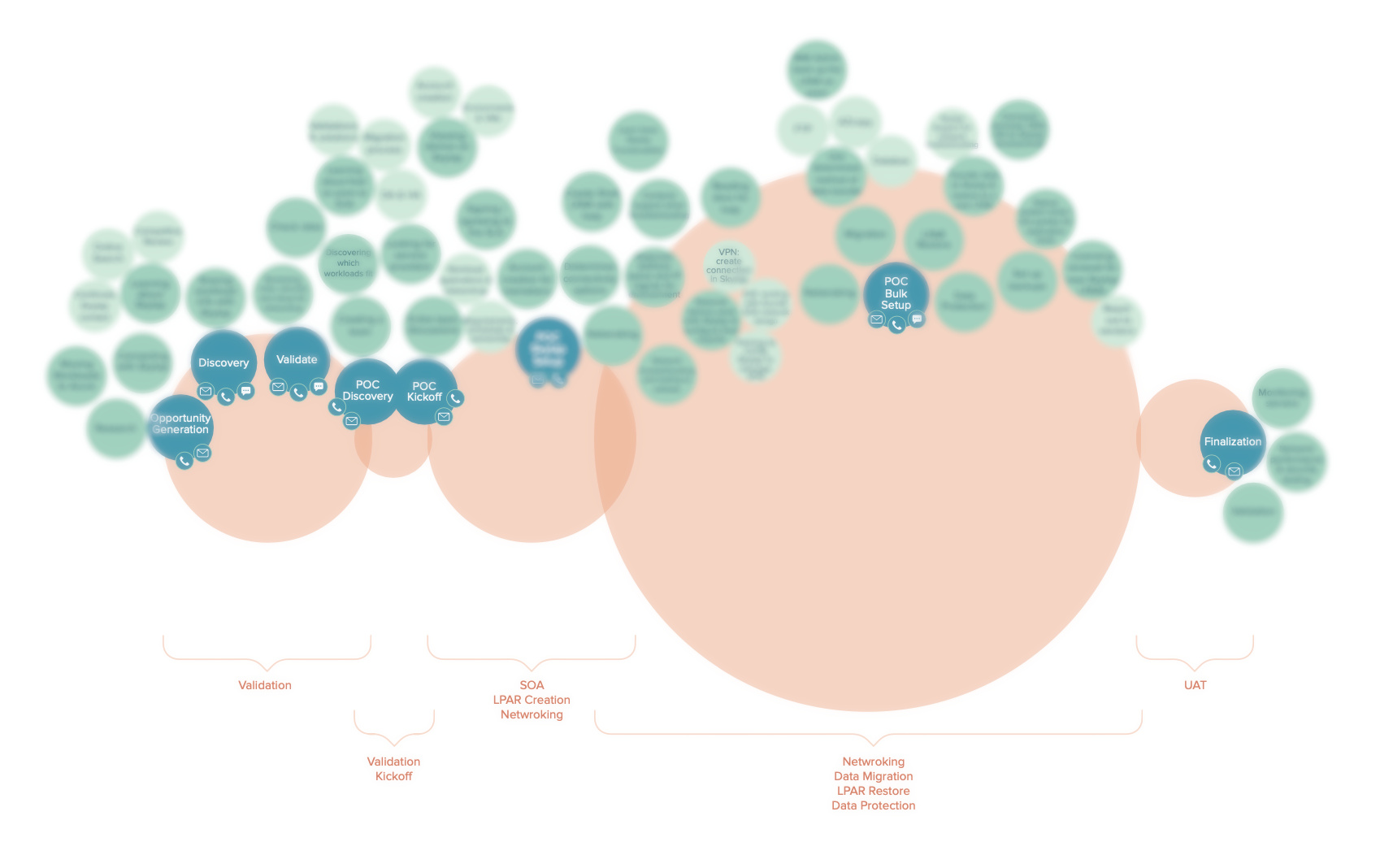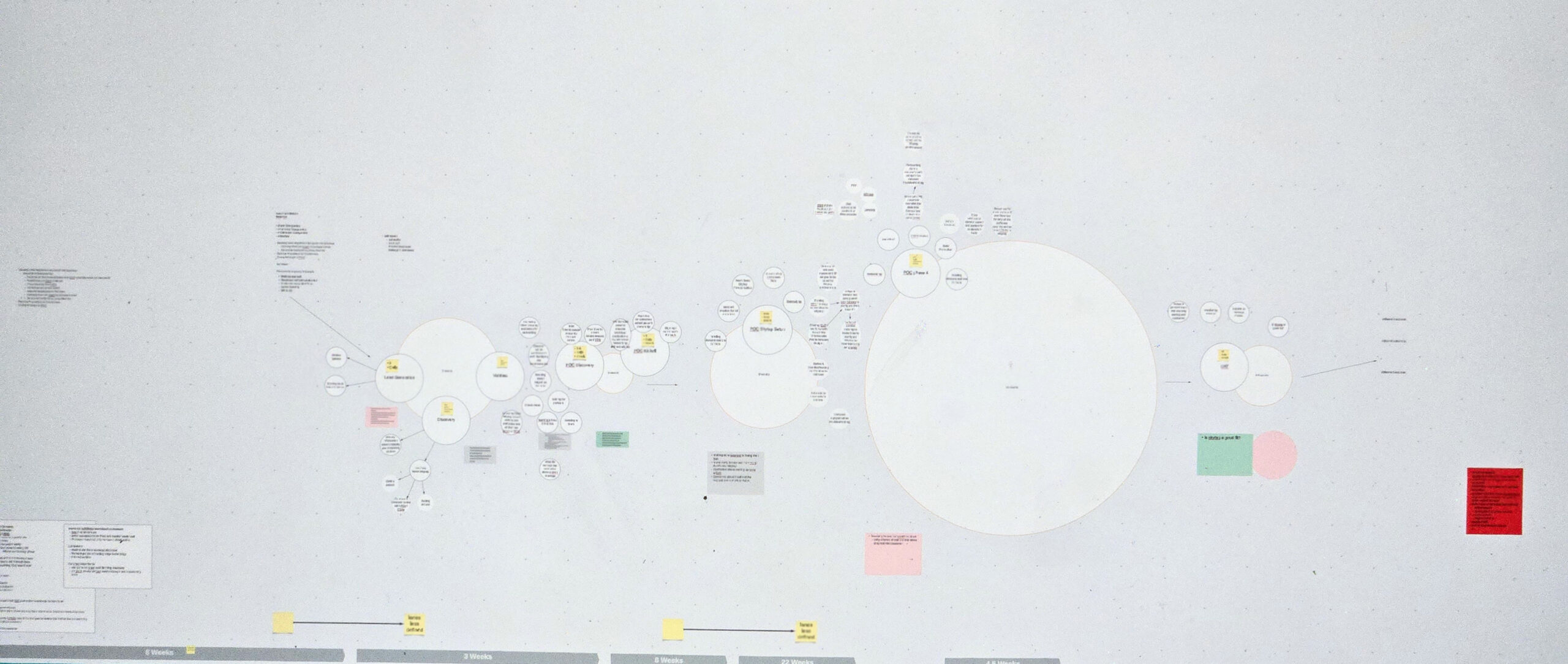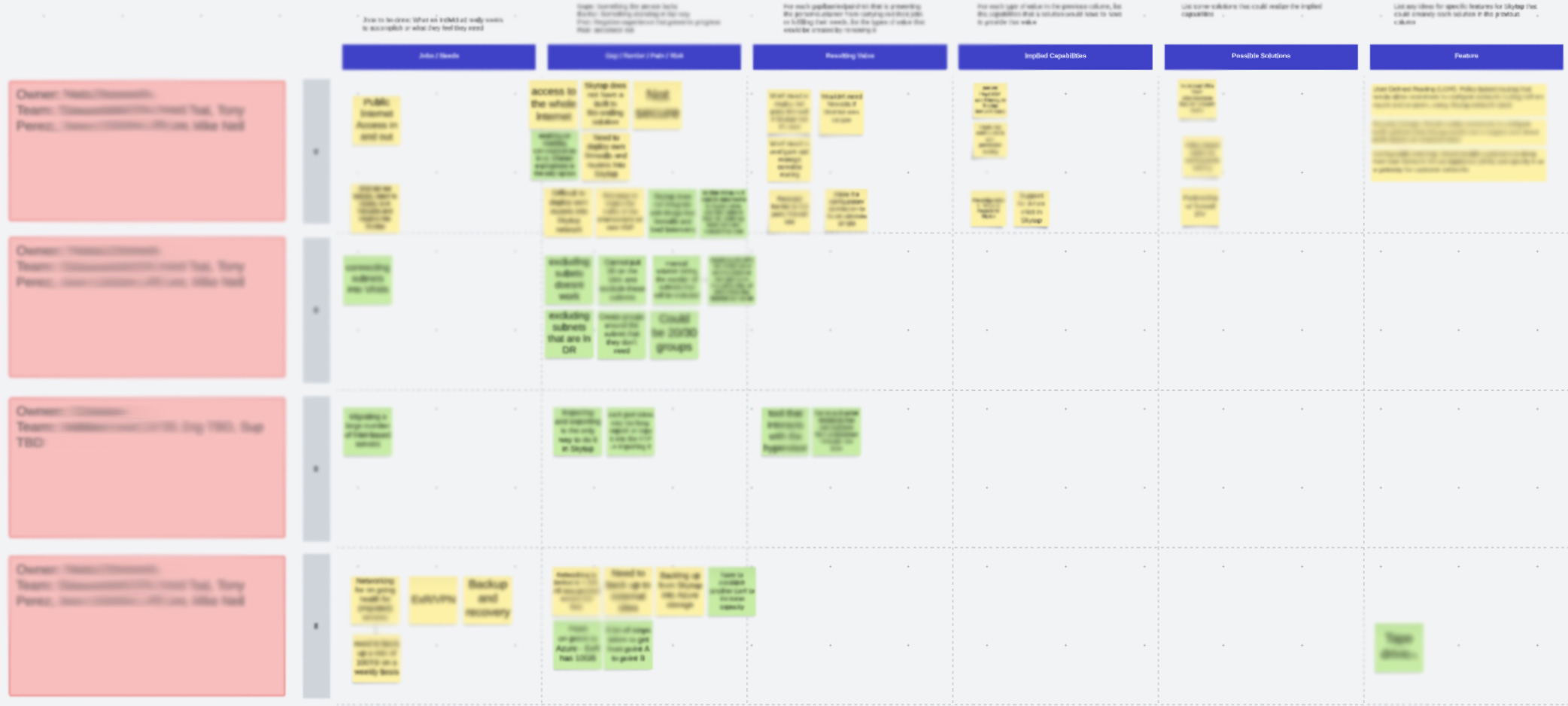Reducing Time to Value Through an Optimized Customer Journey
The objective of this project was to find the key features that will help transform the user experience for a cloud-based product by significantly reducing the Time to Value (TTV). The business encountered substantial delays from first contact to when users had accounts and turned on their first virtual machine (VM). This process sometimes spanned months before achieving a tangible outcome. My focus was on streamlining this experience into product initiatives that the product team can own.
While the granular findings remain confidential, this case study outlines the processes, strategies, and methodologies that guided my approach, demonstrating my design thinking skills in shaping a customer journey that delivered not just understanding but action items to the product managers.
The Challenge
My biggest challenge was collaborating with the Customer Solutions Architects (CSAs). Before I joined, the team had developed a longstanding mindset of overprotecting their customers, which made it difficult to conduct client interviews and participate in observational research. This led to delays and roadblocks. Additionally, inconsistent documentation hindered our ability to gather quantitative data, forcing us to rely heavily on qualitative methods and internal research.
Despite initial setbacks, I fostered relationships with several CSAs who became UX enthusiasts. This, in turn, created opportunities for customer interviews, observational studies, and ongoing collaborations—allowing us to learn and grow together.
My Role
As the Lead UX Researcher, I spearheaded a cross-functional initiative to map the customer journey. We identified user pain points by conducting internal and external interviews, observing calls, facilitating workshops, and collecting quantitative data through surveys and Pendo. Additionally, we synthesized insights from various internal teams—including professional services, customer-facing teams, engineers, and stakeholders—to provide a full understanding of the user experience and our product's limitations.
Translating these findings into a comprehensive journey map to visualize the customer experience and a perspective grid to highlight friction points, enabling the product team to take targeted action.

Discovery & Insights
The journey map was broken down into five distinct phases, each representing significant divisions within the company's existing framework. as shown in blue. For each of the 5 phases, I analyzed the average time users spent before transitioning to the next stage. I represented these durations visually, using orange circles to depict the time spent at each phase, with the size of the circle proportionate to the time required. They were displayed in translucent circles that show when these phases overlapped and how much they overlapped.
Key findings emerged, showing inefficiencies at specific touchpoints between the customer and the company. The user's steps and potential variations, based on individual needs, were highlighted with green indicators, where darker shades signified primary actions and lighter shades represented optional paths.
Beneath the visual journey, I outlined the pain points and opportunities for each of the five phases. This layer of analysis laid the groundwork for actionable recommendations that would drive immediate and long-term product enhancements.


Shifting from Research to Ideation: The Perspective Grid
After mapping the customer journey, it became clear that a structured approach was needed to transition from insight to action. This is where the Perspective Grid became instrumental. It helped us prioritize user needs, pain points, and product gaps, serving as the blueprint for collaborative problem-solving with the product management team.
Using the Perspective Grid, we:
- Collaboratively Aligned: We categorized user needs into "jobs" that needed improvement and ensured alignment across teams—especially with product managers—on the priorities.
- Identified Gaps: We pinpointed missing capabilities that led to user confusion and friction.
- Addressed Barriers: We identified structural and technical challenges that complicated user setup and migration.
- Analyzed Risks: We highlighted points where users hesitated, such as unclear pricing or overly complex technical requirements.
- Transitioning to Solutions: With the insights organized, we began generating potential solutions aimed at reducing the TTV. We kept the users at the center while directly addressing pain points identified during the journey mapping process.
This collaborative process allowed the entire team to focus on the most critical issues and prioritize them in future development phases.

The Impact
After completing the user journey map and gathering research insights, I recognized that we needed a structured method to move from the research phase to ideation and solution generation. While the original project scope focused on identifying pain points, I took the initiative to ensure that our findings could drive actionable outcomes. This led me to introduce the Perspective Grid, a tool that helped bridge the gap between research insights and the solution space.
Traditionally, the Perspective Grid is used to resolve complexity in user journeys, but in this case, I applied it as a strategic framework to facilitate collaborative problem-solving. It allowed us to organize user needs and pain points in a way that made it easier for stakeholders to identify opportunities for improvement. By framing the issues through this grid, we ensured that every team member—product managers, support, engineers, and stakeholders—was aligned on the critical challenges and how they might be addressed in future phases.
Next Steps
This approach didn't just serve the immediate needs of this project—it laid the groundwork for future product enhancements. By prioritizing both short-term fixes and long-term enhancements, we ensured that the insights gathered could drive future research and development efforts.
Ultimately, this project wasn’t just about reducing technical barriers. It reshaped how the company approached its customer journey, leading to quicker, more meaningful value for users. Through this initiative, we reinforced our commitment to user-centered design, positioning the company for continued growth and customer satisfaction.